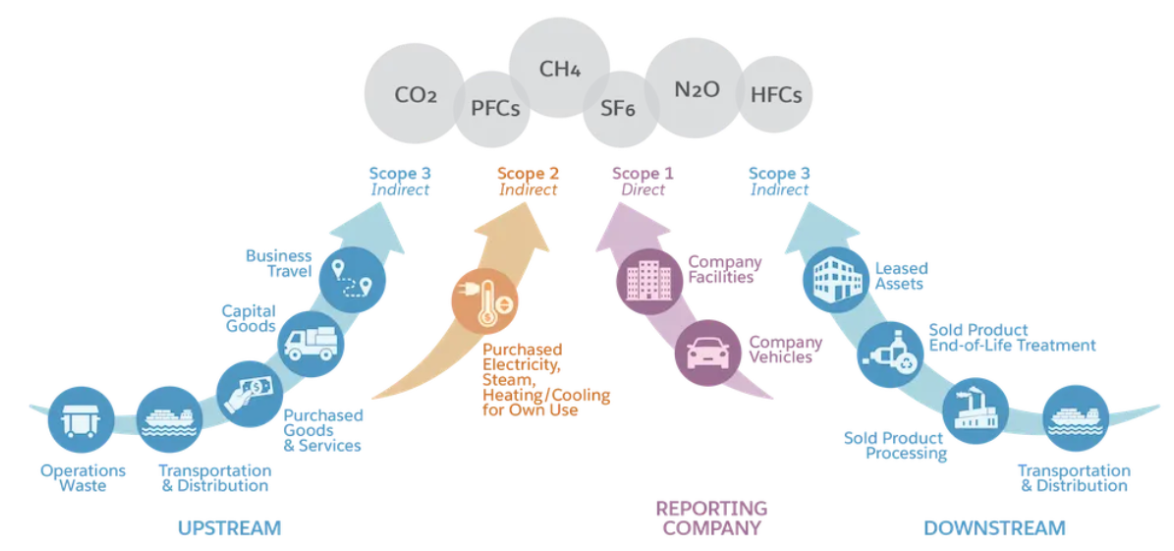
What is Net Zero?
Net Zero refers to a state where the amount of greenhouse gas (GHG) emissions released into the atmosphere is balanced by the amount removed from the atmosphere. The Intergovernmental Panel on Climate Change (IPCC) states that GHG emissions are the root cause of global warming and their levels are increasing each year.
The Paris Agreement stipulates that emissions must be cut by 45% by 2030 and reach Net Zero by 2050 in order to keep global warming to 1.5°C. Thousands of organizations entered the “Race to Zero”, pledging publicly to take action and halve their GHG emissions by 2030.
The Net Zero journey, from pledge to proof
Organizations that take a leadership position on the Net Zero journey need a solution that facilitates auditing their value chain, measuring and monitoring emissions, and reporting to stakeholders.
Salesforce’s Net Zero Cloud is such a solution – a complete sustainability management platform that acts as the single source of truth for all environmental data. Net Zero Cloud helps manage real-time sustainability data, automate supplier emissions tracking, forecast, and reduce risk.
Features include:
- Carbon accounting and forecast for sources across levels (scope 1, 2, and 3)
- Climate action and sustainability audit dashboards
- Executive stakeholder reporting
- What-if analysis
- Water and waste management
- Scope 3 and supply chain management
Scope 1, Scope 2, and Scope 3 are the three categories used to classify an organization’s greenhouse gas emissions.
What’s the difference between Scope 1, Scope 2, and Scope 3 emissions?
- Scope 1: Direct emissions from sources owned or controlled by an organization (e.g.: driving vehicles, operating machinery to create products, heating a building, or running computers.)
- Scope 2: Indirect emissions from the organization’s purchased electricity, heat, or steam consumption.
- Scope 3: All other indirect emissions that happen in an organization’s value chain, upstream or downstream. They can be created by the suppliers making a product for the organization or by customers using the organization’s products.


According to Deloitte, for many businesses, Scope 3 emissions account for more than 70% of their carbon footprint. This is the most challenging category because it’s influenced by decisions made outside the organization and activities must be tracked across the entire value chain, from suppliers to end users.
How does Net Zero Cloud combine sustainability and technology?
Net Zero Cloud brings all your emission data together in one place to drive climate action and advance on the path to Net Zero.
Net Zero Cloud automates the data collection and emissions calculation processes, allowing organizations to identify opportunities to reduce their footprint and costs. Data can be collected from various sources: IoT, CSV or PDF files, or API integrations.
A comprehensive library of standard emissions factor reference data sets is available, for accurate carbon accounting, including data sets from IPCC, the US Environmental Protection Agency (EPA), Energy & Industrial Strategy (BEIS), UK Department for Business and many more.
Scope 3 emissions and supply chain are managed through a hub that allows organizations and suppliers to get a shared view of climate impact. The Scope 3 emissions hub provides granular tracking of environmentally extended input-output (EEIO) and procurement data for effective management of emissions from upstream processes.
Science-Based Targets, Carbon Emissions Forecasting, and What-If analysis features enable organizations to set targets for the future, create sustainability commitments and view their overall status.
The Climate Action Dashboard shows emissions forecasts, giving an indication of where the carbon footprint is headed in the next few years and where it should be.
Organizations can simulate the impact of business decisions on the carbon footprint using the What-If analysis tool to forecast different scenarios.
Net Zero Cloud has extensive reporting and visualization powered by CRM Analytics. Dashboards are available for Scope 1, 2, and 3 emissions, waste management, and renewable energy categorized by location, scope, and activity.
Another useful feature is the Net Zero Marketplace. As organizations strive to reduce emissions, they can buy carbon credits to support projects created by ecopreneurs all over the world. A carbon credit is a transferable certificate that represents the removal of one metric tonne of carbon dioxide or equivalent.
Net Zero Cloud works with Tableau for data visualization, MuleSoft for complete integration into Customer 360, and Slack to collaborate with the stakeholders.
In Conclusion
Net Zero is a psychological shift as much as a technological one. By striving towards Net Zero, organizations demonstrate their commitment to a sustainable future, while also gaining a competitive advantage in an increasingly climate-conscious world.
With Net Zero Cloud, organizations can automate their emissions calculations and free up time to focus on climate action, ensure accurate data for regulatory compliance, make informed decisions, report to stakeholders, and track their sustainability goals.

Beyond carbon footprint, how to reach operations in IT decarbonization management?

Want to learn more about Net Zero Cloud?
Check out TechRadar by Devoteam 2023 to see what our experts say about it in the market.